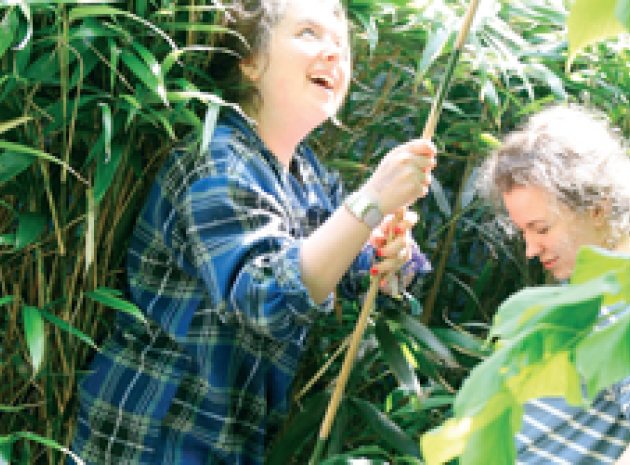9 STEPS TO SUSTAINABILITY
1 DISCUSS
Set up a Sustainability Council; invite members of your school community to join in and make practical suggestions, and help put them into practice. Draw up ideas in a document – or, in our case, a Sustainability Charter – to be acknowledged by the school’s management team. Within this document, outline your school’s commitments to sustainability. Agreed principles can then figure prominently in the building, development and decision-making processes of the school on anything from repair work to the design of new buildings. Involving students in practical recycling initiatives is an excellent way of driving sustainability to the forefront of their minds.
2 PLAN
Divide up your space. Create an area for a kitchen garden, where students are free to experiment within clearly defined parameters; consider it as an outdoor classroom. Start small – you could create one of the following: a soft-fruit growing area, a vinery, a poly-tunnel, raised planting beds, composting bins and pumpkin mounds. Space permitting, it is worth creating vegetable plots and a defined bio-diversity area.
3 VISIT
Take time to visit local organic farms or centres of low-impact development, such as the National Botanic Gardens and the Centre for Alternative Technology. Exposure to the work of practitioners elsewhere fuels the discussion process and leads to imitation and modification. This can be a valuable learning exercise, which gives students an insight into the rapidly developing wider world of sustainable initiatives. An exchange of ideas with the people from outside of the school infuses the students with fresh ideas and energy. It gives them an understanding of the fact that sustainability is a long-term undertaking.
4 CONTACT
Speak with local experts, parents and former pupils, who now work in relevant fields. This enables current students with an interest in environmental issues to identify with real-life role models. It spurs students to take an imaginative leap into the future and think, what might I be doing in ten years’ time? Also, by expanding your web of contacts you are more likely to pick up the ideas and techniques that will work for you and your school.
5 (a) CREATE AN EVENT
Make an event out of your sustainable intentions. Invite experts, organisations, or stakeholder groups to visit your school and engage students in discussions and debates and share their views on local/global environmental issues. We hold an annual Sustainability Conference, which gives participating students and teachers their time in the limelight to talk about the school’s environmental projects.
(b) SHARE LEADERSHIP
Promoting sustainability means empowering everyone, from SLTs to Y7 learners, to get involved. Linking different departments can give the enterprise of sustainability a wider reach. Give students the opportunity to run their own workshops and projects, allow them to road-test their own initiatives and try out their own ideas. Remember too, that students are unlikely to be the only stakeholders in your community. Be sure to include the ground-staff, kitchen-staff and wider faculty members in decision-making. Your school’s kitchen might be throwing away valuable composting material that could be used to grow crops for your canteen.
6 PLANT
Try out a range of crops: rhubarb, spinach, salad, runner-beans, raspberries, and beetroot, all of which are easy to grow. Once you’ve mastered the art of producing staples like these, try something more adventurous. Here at UWC Atlantic College we have grape vines in our vinery, a herb garden, artichokes in cold-frames and a poly-tunnel full of tomatoes. Try a range of techniques. We mix rotting wood with comfrey and horse-manure to make pumpkin mounds. It is all about learning to become better growers, producers for your own community, recyclers and custodians of your immediate environment.
7 BUILD
Start by repairing roofs and guttering, collecting run-off water in butts and building raised beds. Why? Building awakens something instinctive in us; it generates excitement and creativity, and provides an important learning opportunity. Here, students built a greenhouse out of recycled plastic bottles, and two years ago we obtained and erected our own poly-tunnel.
8 DIVERSIFY
Embrace a range of approaches and techniques to allow your students to develop their expertise in niche areas. Sustainability isn’t just about conservation, recycling and frugality. There is expertise to be acquired in many fields: acquiring it is fun and can lead to a greater understanding and, ultimately, to a lifetime of commitment.
9 SUSTAIN
Take time to visit local organic farms or centres Be sustainable in your approach to sustainability. Do what is do-able. Unsustainable commitments in terms of time and resources obviously won’t sustain you in the long-term! You have to be realistic about what is achievable. Pick a few projects and do them well.










